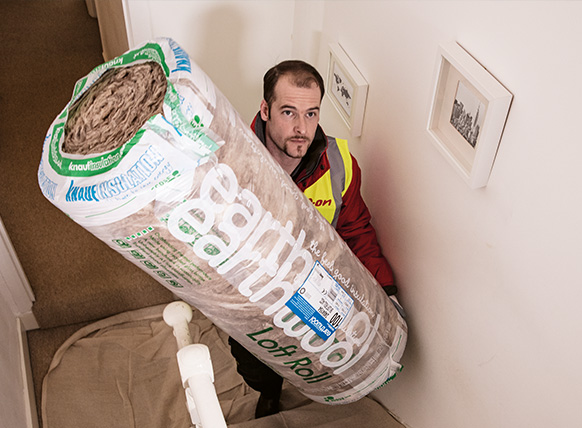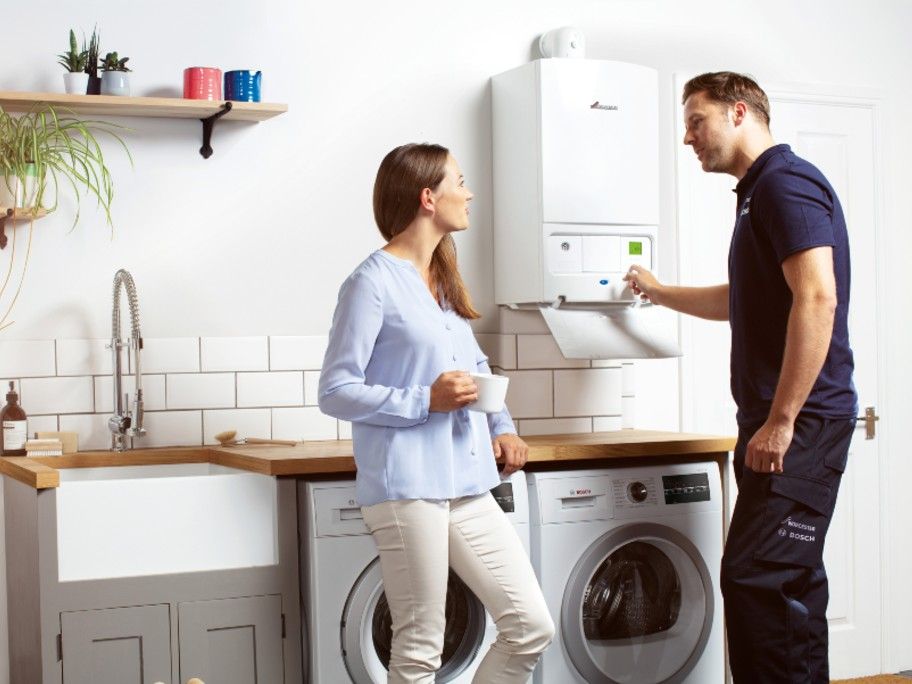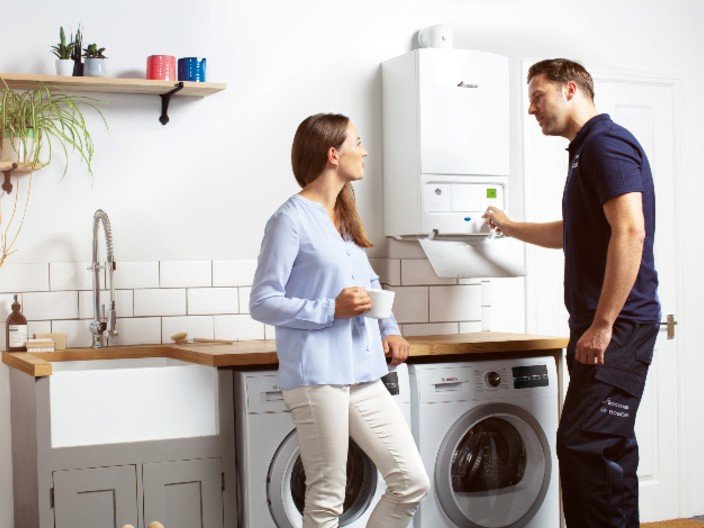Practical ways to make your home energy efficient in winter
Having an energy efficient home can help to keep your bills as low as possible and will also help you to take action for climate and reduce your impact on the environment.




Heating and driving are the biggest contributors to most Britons' carbon footprints1, but everything from the packaging we throw out to the clothes we wear can fuel the climate crisis.
So it’s good to know that innovators across a range of industries are moving away from the current cycle of pollution and waste, instead taking inspiration from nature and technology to take climate action.


1. Insulate from the top down
If your home isn’t fully insulated, you could be wasting energy and money heating your home only for the heat to escape through a lack of insulation.
However, with the right level of insulation throughout your home the heat will stay inside for longer, meaning less work for your boiler or heat pump and a warmer, cosier home for you and your family.
There are three main areas to think about when looking at insulation levels in your home:
Roof
One of the prime places for heat loss is the roof and as much as 25% of the heat lost from a home is through an uninsulated roof1.
The type of insulation you use and the way it’s installed will vary on whether you have a pitched or a flat roof property, so make sure you look at the best roof insulation for your home. With a pitched roof for example, the insulation can be done between and above the rafters. However, with a flat roof, the insulation is normally applied on the outside of the property.
Walls
When it comes to walls, around a third of heat is lost through the walls in an uninsulated home2, so by having fully insulated walls you could help to dramatically reduce heat loss from your home.
UK homes generally have two main types of walls which need to be insulated differently, these are cavity and solid wall.
- Cavity walls – If your home was built after the 1920s it’s likely to have cavity walls, which are made up of two walls with a gap in between, known as the cavity. Insulation in cavity walls is generally quite straight forward, however a professional will need to do the insulation for you. There are schemes available to help you get access to free or partially funded installation so it’s worth looking into what help you can help.
- Solid walls – If your home was built before the 1920s it’s likely have solid walls. Solid wall insulation can go either on the outside or inside the home and involves much more work. It can be a good opportunity to think about solid wall insulation if you’re planning on redecorating inside your home or recladding your home on the outside.


Floors
It’s really important to remember that heat can escape through floors in a home and whilst generally speaking you only need to ensure ground floors are fully insulated, it might be that one of your upper floors is over a garage or an unheated space. The type of floor insulation varies depending on what your floor is made of, but there are a number of options available to suit different flooring types.
2. Seal up any draughts around your home
A draughty home means an inefficient home and the good news is there are many simple and cost-effective ways homeowners can help to ensure their home is fully sealed up and protected against draughts.
Draughts from windows and doors are tell-tale signs of where the cold air comes in and heat goes out so try using foam, metal or plastic draught excluders which can easily be purchased from a local DIY shop, around windows, doors and even around places such as loft hatches, keyholes, and letterboxes to keep the cold air out.
You could also close doors in rooms that you’re using so the heat stays in the room and use material draught excluders at the bottom of doors so no air can escape. Thick curtains at windows can also help to keep the cold air out and the heat inside your home.


3. Think about upgrading your lighting
During winter we tend to have our lights on more in the day and with lighting accounting for around 11% of a household’s typical electricity consumption3, you could save money on your energy bills and reduce your energy use simply by switching over to energy efficient light bulbs or LED lighting. On sunny winter days, try to let natural daylight into your home to avoid having to use lighting throughout the day.
And why not consider smart lighting which means you can set timers, so lights go on and off automatically.
4. Wrap up your home and pipes
Just like us, your pipes aren’t a fan of being cold and in extreme temperatures could freeze and prevent your heating from working properly. So consider insulating your pipes to protect them from the cold weather. You can buy insulating materials at DIY stores and easily wrap them up yourselves.
If you have a hot water tank, try wrapping it up in a hot water cylinder jacket to prevent the tank from losing heat unnecessarily. A hot water cylinder jacket costs around £16 from a DIY shop and could save you about £70 in heating costs per year4.


5. Check your home heating
Now that your home is fully insulated and all draughts are dealt with, you can look at how you heat your home and ensure it's being heated efficiently.
Most of us rely on our boilers to ensure we have constant heating and hot water at home, however if you have an older model it could be that your boiler is inefficient.
Older boilers are also more likely to break down and leave you in the cold so it’s a good idea to check the efficiency of your boiler and consider upgrading to a more energy efficient one if you need to. And check the flow temperature of your boiler too. This is the temperature of the water leaving your boiler to flow around your home and is often set too high.
Reducing the flow temperature could help reduce your gas bills by 6-8%5 without impacting the heat of your home. If you’re unsure how to do this or what to set the temperature at, we suggest asking an engineer to check the flow temperature for you.
If you’re looking to upgrade your heating solution, maybe it’s a good time to think about installing a more sustainable solution, such as an air source heat pump. Air source heat pumps are a great, energy efficient choice for heating your home and water and as well as being low maintenance, they can help to cut your heating costs and lower your carbon footprint.
So, by making some simple changes to your home this winter, many of which you can do yourself, your home should be a warmer, more comfortable place to be.
There’s also support available for homeowners, particularly those most in need, to pay for improving the energy efficiency of their homes. More information about the support available can be found here.
1. Energy Saving Trust: Roof and loft insulation
2. Energy Saving Trust: Reducing home heat loss
3. Energy Saving Trust: Lighting
4. Energy Saving Trust: Insulating tanks, pipes and radiators
5. The Heating Hub: Save up to 8% on your gas bills, by turning down the 'flow' temperature